Introducing Delicious Food of Shimabara
Shimabara has unique ingredients and local cuisine that gives one a sense of history.
Let us introduce some of Shimabara’s delicious food.
Guzoni
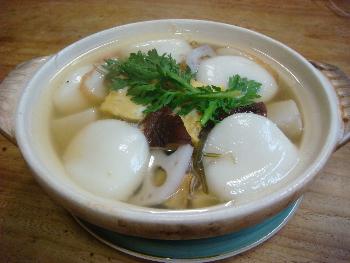
Guzoni are said to date back to the Shimabara Rebellion of 1637 when the leader of the uprising, Amakusa Shiro Tokisada, held a siege in Hara Castle with about 37,000 followers.
He made the local farmers provide the rebels with rice cake. The rebels gathered other ingredients from the ocean and the mountains to put in the soup they cooked the rice cake in, and thus were able to fight for three months sustained by nutritious food.
Ganba (Tiger Puffer)
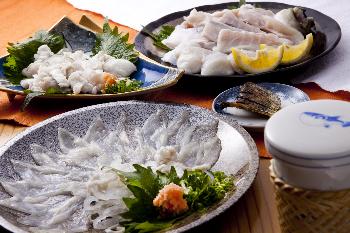
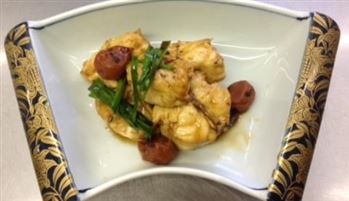
In Shimabara, people calls pufferfish “ganba.” In the Edo period, the lord of the feudal clan issued a prohibition against pufferfish because they can be lethally poisonous.
Despite that, many people still wanted to eat the delicious fish.
Because of that, pufferfish were called ganba which derives from gan, the word for coffin and ba, in the phrase meaning that people want to eat pufferfish so much that they are willing to be ready for their own coffins.
Tiger pufferfish come to the Ariake Sea in winter and the ocean around the Goto Islands from March to May every year, to spawn.
Spring is peak season for pufferfish fishing at the port of Shimabara and Ganba is the dish made with the tiger pufferfish.
Rokube
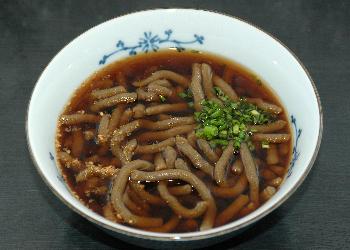
In the year 1792 Mt. Mayuyama, which is behind Shimabara city, collapsed and generated a massive tsunami which caused great damage to the coastal areas.
This event became known as the “Shimabara Taihen” disaster.
In the aftermath, there was a food crisis on the Shimabara Peninsula and people changed to sweet potatoes for their staple diet.
At that time, a farmer called Rokube from the village of Fukae made a dish by mixing grated yam with ground-up dried sweet potato.
He then added some hot water and kneaded the dough to make thick noodles. This is how Rokube originated.
The soup is soy sauce-based and the noodle dish is eaten with a garnish of green onions. Rokube is a very simple dish that many find to be nostalgic
Shimabara Tenobe Somen
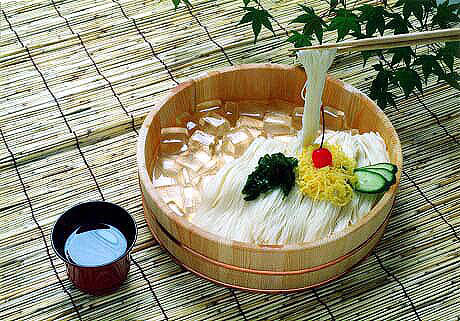
Tenobe Somen is a kind of noodle that has been stretched by hand and it is made all over Japan.
However, the distinguishing feature of Shimabara Tenobe Somen is that it is good and chewy, not soft.
Eating these noodles cold on a hot summer’s day is refreshing but when cooked in hot soup, the good thing about these noodles is that they don’t become soft and mushy.
Using the abundant pure water of Shimabara, Tenobe Somen noodles are made all year round.
Kanzarashi
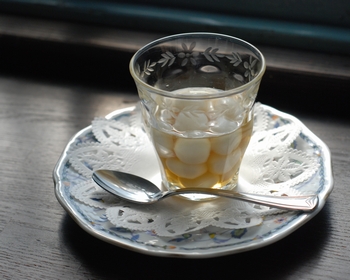
Small dumplings are made using refined rice flour and after cooking the dumplings, they are cooled in Shimabara spring waters.
Then, a special syrup made from honey and sugar, etc., is poured over the dumplings.
The elegant sweetness of this dish is mouth-melting and the way they taste so good going down, makes Kanzarashi a simple yet popular hometown dish.
Igirisu
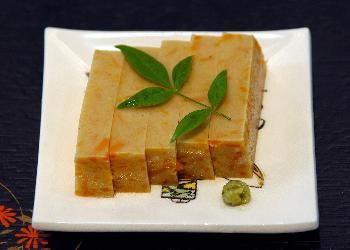
This is a grandiose name, similar to the Japanese name for the British Empire.
However, it is an authentic dish from the Shimabara area.
The seas around Shimabara are abundant and this dish is made using agar, or Japanese gelatin, present in a type of red algae found in the seas around Shimabara.
The name of the dish, Igirisu, derives from the Japanese name for the algae, Igisu. As this is a dish made at home, the method of making it and the taste, vary from house to house.
The method to make Igirisu is the same as for making jelly with agar and, carrot or fish, etc., may be added according to preference.
Recently, it is gaining attention again as a healthy food.
Ariake crab
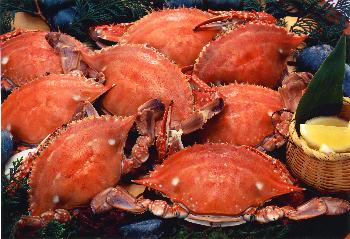
Taira crab is known as Gazami or Japanese Blue Crab.
These crabs are most delicious when they are caught off the port of Taira and they have long been known by this name in the Shimabara Peninsula area.
The peak season is from summer to autumn but Japanese Blue Crab can be eaten all year round and are very popular with tourists.
Nori
The Ariake Sea is relatively shallow and its waters are calm so, from a long time ago, nori cultivation has been thriving, in competition with Kumamoto, Fukuoka and Saga, on other sides of the Ariake Sea. Seeding of algae to grow nori begins around October and harvesting takes place from December through to March.
Nearly all of the nori that is harvested is processed and shipped as dried sheets of nori.
The fragrance and texture of nori that has been lightly toasted stimulates the appetite.